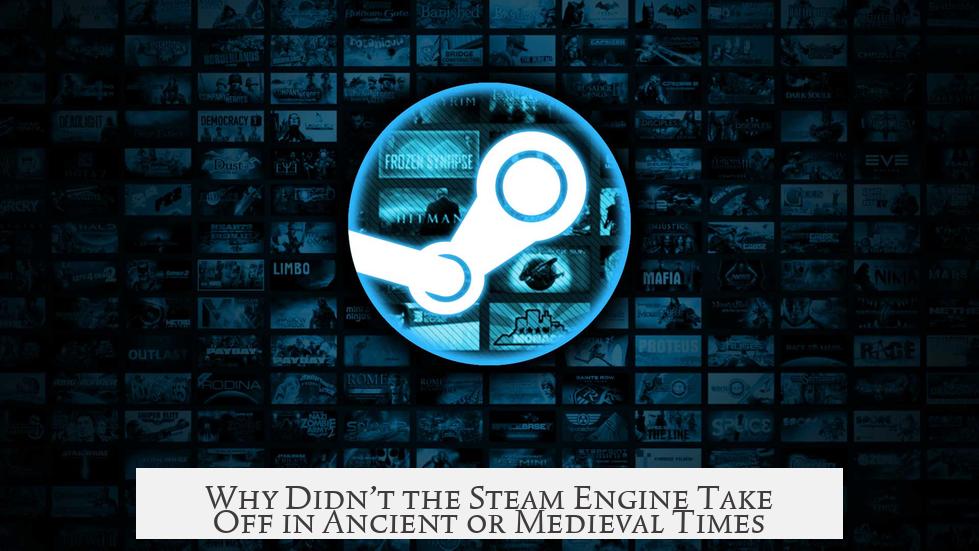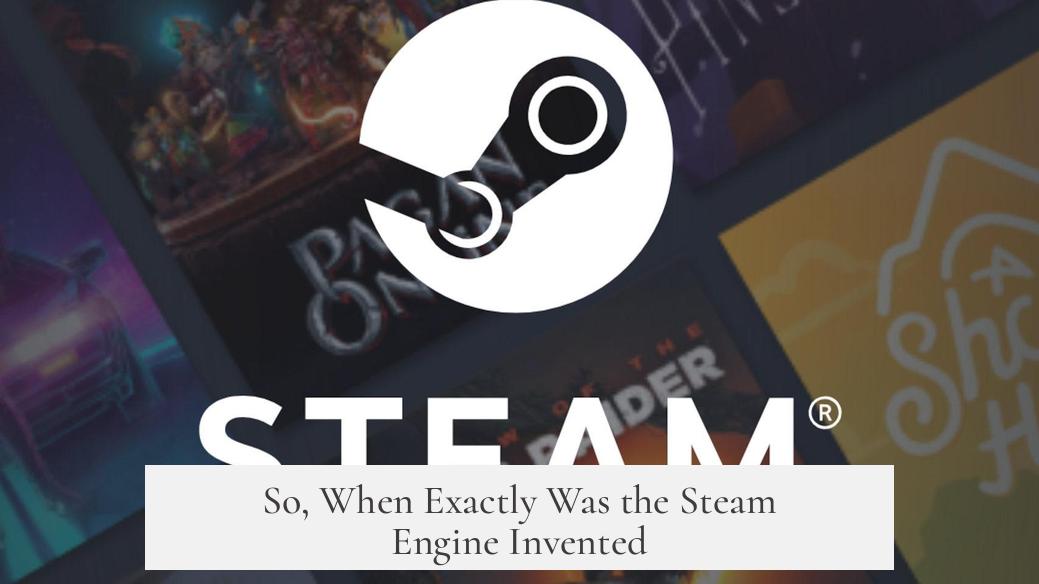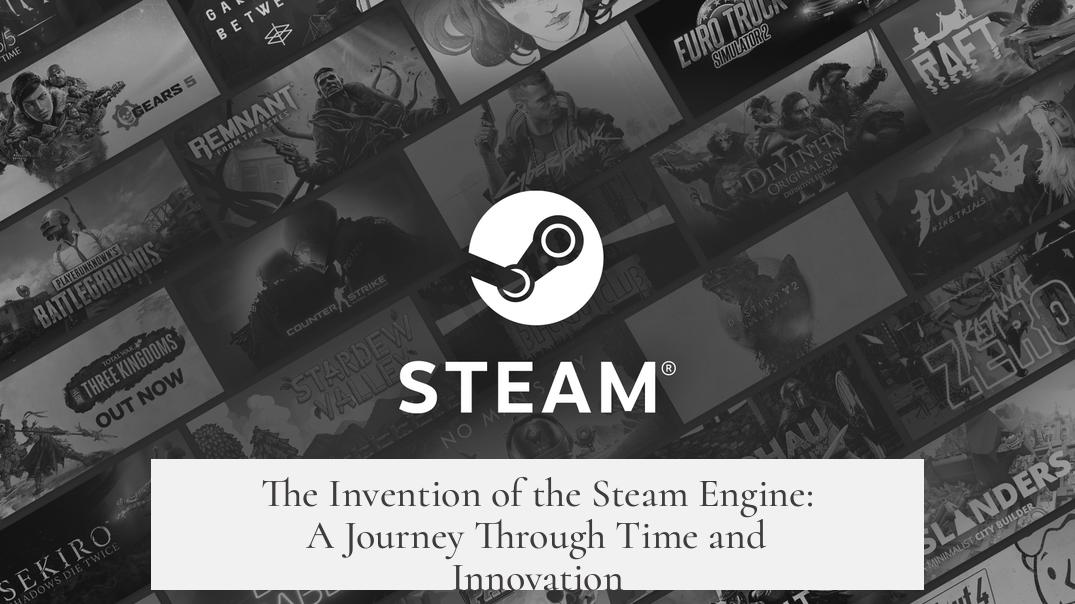The steam engine was first practically invented in the late 17th and early 18th centuries, marking a significant technological breakthrough that powered the Industrial Revolution.
While primitive steam-powered devices existed much earlier, such as the Aeolipile devised by Hero of Alexandria in the 1st century AD, these were rudimentary and lacked practical application. The Aeolipile, sometimes called Hero’s engine, demonstrated steam power by producing rotary motion. However, it served mainly as a curiosity or toy rather than a tool with industrial utility.
Similar devices appeared sporadically in ancient Greece and Egypt, illustrating early scientific curiosity about steam. Nevertheless, the technology did not advance beyond demonstrations or fanciful designs. Ancient and medieval societies lacked the necessary scientific understanding, materials technology, and economic incentives to pursue steam power at a practical scale.
Several factors contributed to this delay in development. The loss of accumulated knowledge after the decline of centers like the Library of Alexandria hindered progress. Additionally, pre-industrial economies did not prioritize mechanical labor over human or animal power. Society’s technological maturity and infrastructure were insufficient to harness steam’s potential.
The first widely recognized practical steam engine emerged in the late 1600s. Thomas Savery patented a steam pump in 1698, designed to pump water from mines. Though innovative, Savery’s engine had limitations in power and safety.
Improvement came with Thomas Newcomen’s atmospheric engine around 1712, which could efficiently pump water and initiate widespread industrial use. Newcomen’s design used steam to create a vacuum that moved a piston, improving work output and reliability.
The steam engine’s transformative moment arrived in the late 18th century when James Watt significantly enhanced Newcomen’s design. Watt introduced a separate condenser in 1765, which greatly increased efficiency by reducing energy waste. Watt’s upgrades allowed steam engines to power factories, mines, and transportation, catalyzing the Industrial Revolution.
| Key Developments | Approximate Date | Description |
|---|---|---|
| Aeolipile (Hero’s Engine) | 1st century AD | Early steam-powered rotary device; demonstration only |
| Thomas Savery’s Steam Pump | 1698 | First practical steam-driven pump for mine water removal |
| Thomas Newcomen’s Atmospheric Engine | 1712 | Improved steam pump using piston and vacuum |
| James Watt’s Improvements | 1765 onwards | Separate condenser and efficiency enhancements, enabling broader industrial use |
In summary, the steam engine known as a practical and industrial machine was not invented during antiquity but developed through incremental innovations over centuries. Early steam devices were more scientific curiosities than workable engines.
The true invention of the functional steam engine corresponds with the innovations of Savery, Newcomen, and Watt during the 17th and 18th centuries. This timeline aligns with the broader historical context of the Industrial Revolution’s technological surge.
- Early steam devices like the Aeolipile existed around 1st century AD but lacked industrial use.
- Significant steam engine inventions began with Savery’s pump in 1698.
- Newcomen advanced efficiency and utility around 1712 with the atmospheric engine.
- James Watt’s improvements from 1765 onward revolutionized steam power’s industrial application.
- Technological, economic, and social barriers delayed steam technology’s development for centuries.
When Was the Steam Engine First Invented? Unlocking the Mysteries of Steam Power

The steam engine as we know it today was not invented in antiquity but took shape much later, mainly during the late 17th and 18th centuries, powering the Industrial Revolution. This answer might come as a surprise if you ever heard about ancient steam devices like the Aeolipile, also known as Hero’s engine. But here’s the full scoop, packed with history and some intriguing “what-ifs”.
Have you ever wondered why the steam engine, which revolutionized industry, did not emerge around the same time as some of its early, rudimentary cousins? Let’s steam through the timeline and uncover the story behind the invention that fueled modern progress.
The Ancient Steam Gadgets That Didn’t Quite Make It
Way back in the 1st century AD, Hero of Alexandria created a device called the Aeolipile—imagine a toy helicopter powered by steam. Steam escaped from nozzles on a spherical vessel, causing it to spin around. Yes, it was cool, but it wasn’t exactly the powerhouse machine that revolutionized transport and manufacturing.
Similarly, the Archimedes cannon and other ancient rudimentary steam devices existed. The Greeks and Romans tinkered with steam, but mostly for entertainment or demonstration purposes. There’s evidence they understood that steam could exert force, but the technology didn’t develop into practical engines that could perform industrial work.
Why not? Although ancient steam gadgets were impressive, they stayed as novelties or scientific curiosities.
Why Didn’t the Steam Engine Take Off in Ancient or Medieval Times?

This is where history gets interesting. Scholars suggest several barriers prevented steam technology from becoming practical before the Industrial Revolution:
- Technological Limitations: Material science was inadequate. Boiler construction, controlling pressure safely, and producing reliable seals were huge challenges.
- Economic Incentives: Societies relying heavily on manual labor and animal power didn’t see the energy efficiency or economic benefits of steam power.
- Knowledge Loss: Events like the exile of scholars from the Library of Alexandria led to a gradual erosion of scientific knowledge, stalling technological progress.
- Scientific Understanding: The principles of thermodynamics and pressure control were poorly understood.
In short, they had steam toys, but no practical reason, tools, or knowledge to build an engine that could transform society.
Fast Forward to the 17th and 18th Centuries — The Real Steam Engine Arrives
The steam engine as a practical, reliable machine finally emerged several centuries later. Pioneers such as Thomas Savery and Thomas Newcomen built early versions of steam engines in the late 1600s and early 1700s. Savery’s engine was designed to pump water out of mines. Newcomen refined it, creating the first true working steam engine around 1712.
Later, James Watt made crucial improvements in the late 18th century. He introduced a separate condenser, significantly increasing efficiency. This innovation was a turning point, allowing steam engines to power factories, trains, and ships. Suddenly, the steam engine wasn’t a curiosity but a cornerstone of the Industrial Revolution.
So, When Exactly Was the Steam Engine Invented?

It depends on what you mean by “invented.” If you consider any steam-powered device, Hero’s Aeolipile fits the bill over 2,000 years ago. However, if we’re talking about a practical, industrial steam engine that transformed economies and societies, that invention dates to roughly between 1698 (Savery) and 1760s-1780s (Watt’s improvements).
The lack of one clear date reflects the steam engine’s evolution. Each stage—a curious gadget, a prototype pump, an industrial workhorse—marks an important milestone in invention.
Lessons and Reflections: The Steam Engine’s Slow Burn
Think about it: ancient Greece was arguably only a few centuries away from something like industrialization, had the right circumstances held. Some research suggests they were approximately 300 years from industrialization before knowledge lost at places like the Alexandria library slowed progress. Would history have changed if steam engines were harnessed earlier? Would your commute look ancient or futuristic?
It shows invention doesn’t only depend on a bright idea. Societies need supporting technology, economic incentives, and the right knowledge environment to turn inventions into revolutions.
Curious to Know More?

Some fascinating reads and discussions include analysis about why the Romans didn’t adopt steam engines massively and the reasons steam technology was sidelined for centuries. These discussions challenge what we assume about “invention” and how human progress often advances in fits and starts.
Ultimately, the steam engine’s story teaches patience. The ancient steam gadgets lit a spark, but it took centuries more before engineers joined the dots, harnessing steam to power a new era.
Ready to appreciate your morning coffee brewed with the spirit of steam power? You’re sipping a legacy centuries in the making!
| Era | Event/Innovation | Significance |
|---|---|---|
| 1st Century AD | Aeolipile (Hero’s Engine) | Early steam-powered device, but a scientific curiosity with no practical use. |
| Late 1600s | Thomas Savery’s Steam Pump | Primitive steam engine aiming to pump water from mines. |
| 1712 | Thomas Newcomen’s Atmospheric Engine | More effective steam engine, widely used for pumping water. |
| 1765-1780s | James Watt’s Improvements | Introduction of separate condenser; greatly enhanced steam engine efficiency. |
| Industrial Revolution (Late 18th Century) | Steam Engines Power Factories and Transport | Begin transforming economies and societies globally. |
In conclusion: Steam power’s invention was a slow but essential march from spectacle to industry-changing force. The true steam engine wasn’t born in an instant, but brewed over centuries, finally steaming full speed ahead in the 18th century.
When was the first practical steam engine invented?
The first practical steam engines appeared in the late 17th and 18th centuries. These engines were developed during the Industrial Revolution, long after early steam devices existed.
Did ancient civilizations invent the steam engine?
Ancient devices like the Aeolipile used steam but were not true engines. These early inventions were mostly toys or demonstrations, not practical machines for work.
Why wasn’t the steam engine developed further in ancient times?
Factors like limited technology, economic structures, and loss of knowledge after the fall of centers like the Library of Alexandria prevented steam technology from advancing.
What role did the Industrial Revolution play in steam engine invention?
The Industrial Revolution created the need and technology to build practical steam engines. It marked the shift from experimental devices to machines that powered factories and transport.
Were steam engines used before the 18th century?
No practical steam engines existed before the 18th century. Early steam devices were limited to demonstration, and true functional engines only emerged during the late 1600s onward.




